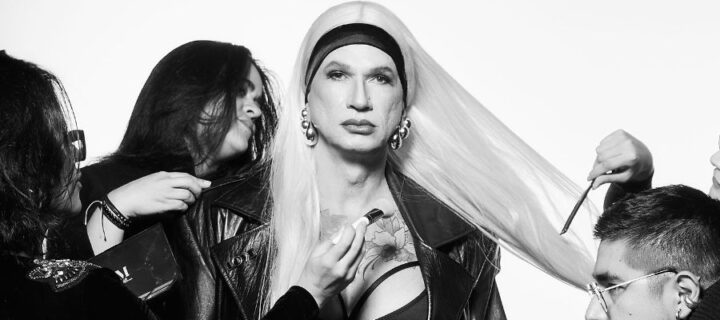
1800s Transgender Woman – The Life of Lucy Hicks Anderson
One of the common misconceptions about transgenderism is that it’s just a trend. However, transgenderism existed way before the mainstream media started discussing and featuring it. Today, we’re going to share the life of Lucy Hicks Anderson, a transgender woman who existed in the 1800s.
Yes, you’ve read that right, the 1800s and not 1980s. And if you think that’s way too early, you must understand that there are accounts of transgenderism back in the Sumerian and Akkadian times. But that’s not what you’re here for so without further ado…
On this page
Who Was Lucy Hicks Anderson?
The African-American transgender socialite was born in 1886 in Waddy, Kentucky, United States. When she was a child, she was vocal about how wrongly she felt about her body. So much so that she insisted her mother allow her to wear dresses in school and treat her like a girl.

Bothered by her novel emotions at that time, her mother sought help from a physician. The physician then advised her to treat Lucy how she felt, including to stop addressing her by her birth name, Tobias.
Education
There are no accounts of whether or not she was bullied in school. But when she was fifteen years old, she stopped pursuing her education and started a career as a housekeeper.
Early Career and Marriage
Leaving her family in Kentucky, she moved to Pecos, Texas. There, she found a job as a chambermaid and did it for over ten years. Come 1920 and she met a gentleman by the name of Clarence Hicks—whom she married shortly after and moved to Oxnard, California with.
With lavish dreams, she continued working as a housekeeper and with enough money saved, she was able to purchase a property. The acquisition of an old boarding house was the start of her blossoming career after she flipped into a brothel.
Oxnard Socialite and the Brothel
The beginning of her life as a socialite all started with her new business venture as an owner, operator, and madam of a brothel.

Bordello Madam in China Alley
Back in the 20s, China Alley was known as an area where gambling, illicit activities, and the use of controlled substances. It was the perfect setting for her line of business. Many of the customers who went to her house of pleasure were esteemed and of the gentry.
The Hostess and Socialite
Albeit her profession wasn’t exactly the paragon of puritanism, she was highly respected in Oxnard. Not only was she known as a bordello owner, but she was also respected as a chef and hostess. In 1926, she won a cooking competition and her custard pie won first place—further cementing her status in the community.
She liked having a good time and hosted plenty of parties and events which included rich guests from Los Angeles and Ventura. Her events were so monumental that on August 3, 1927, one of her parties at the Oxnard Community Center was featured in the local newspaper.
Along with her events for the gentry, she was also known for hosting going-away parties for men who were headed to war and their families. While she had a great talent for concocting recipes and events, her stunning looks also played a big part in her success.
According to a Time Magazine article, the statuesque and slim 6ft. 2in. woman had decadent fashion taste:
She wore bright, low-cut silk dresses from which her slatlike collarbones protruded, and she affected picture hats and high-heeled shoes. Her wigs were her pride —she had a long, black, wavy one, a short, straight, bobbed one, and for special occasions a shoulder-length job in red.
Arrests, Controversies, and Marriages
Her success didn’t come without challenges and run-ins with the authorities.

Liquor Ban Arrest
On May 1928, she was arrested during a countywide alcohol sweep for liquor possession and selling. It was also a time called the age of Prohibition in the US when alcoholic drinks weren’t allowed.
But because of the connections she made as a hostess, she was bailed out by Charles Donlon. He was known in Oxnard as a wealthy banker. He was scheduled to attend one of her upcoming dinner parties and he didn’t want it to be postponed.
Admitting to Crimes She Did Not Commit
In 1927, she accused Ventura County Sheriff’s deputies of misconduct. She shared that the men allegedly forced her and another person to confess to crimes that they did not commit. Which was to confess that they paid off the chief of police to continue living in Oxnard.
Divorce and Remarrying
Back in 1929, after many years of marriage, she divorced her first husband Clarence. After 15 years, in 1944, she married a soldier named Reuben Anderson.
The Outing of her Transgender Identity
Lucy was able to live stealthily as a woman but in 1945, her life was pivoted to her most challenging time yet which would cement her name as a black transgender pioneer for trans rights.

In the said year, the local Navy service members were infected by an outbreak of STDs. The officials investigated the nearby brothels in Los Angeles, including Lucy’s. There, they forced the women to undergo medical examinations.
She refused—sharing that she didn’t offer services to the patrons but they did not grant her request. That was when the examiners found out that she was assigned male at birth.
Perjury and Legacy
The examiners shared their discovery and her story made newspaper headlines in the US.

Perjury in Ventura, County
She was charged with perjury for signing a marriage form with “another” man by a district attorney in Ventura, County.
During her trial, she made a powerful statement about her womanhood.
I defy any doctor in the world to prove that I am not a woman.
she said in court.
I have lived, dressed, acted just what I am, a woman. It’s only petty maliciousness that is trying to cause me heartache and harm. If they would devote the same amount of energy to local problems that are hurting the community, it would be much better. I have lived a good life and a Christian life … I have lived a good citizen for many years in this town and am going to die a good citizen.
Transgender People and Marriage
Because of her case, the lack of rights of transgender individuals was brought to light. She is considered by many people as the first trans person to fight for gender identity and for trans people to have equal marriage rights in the USA.



